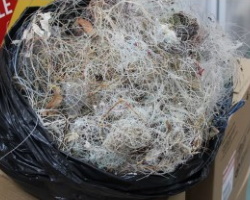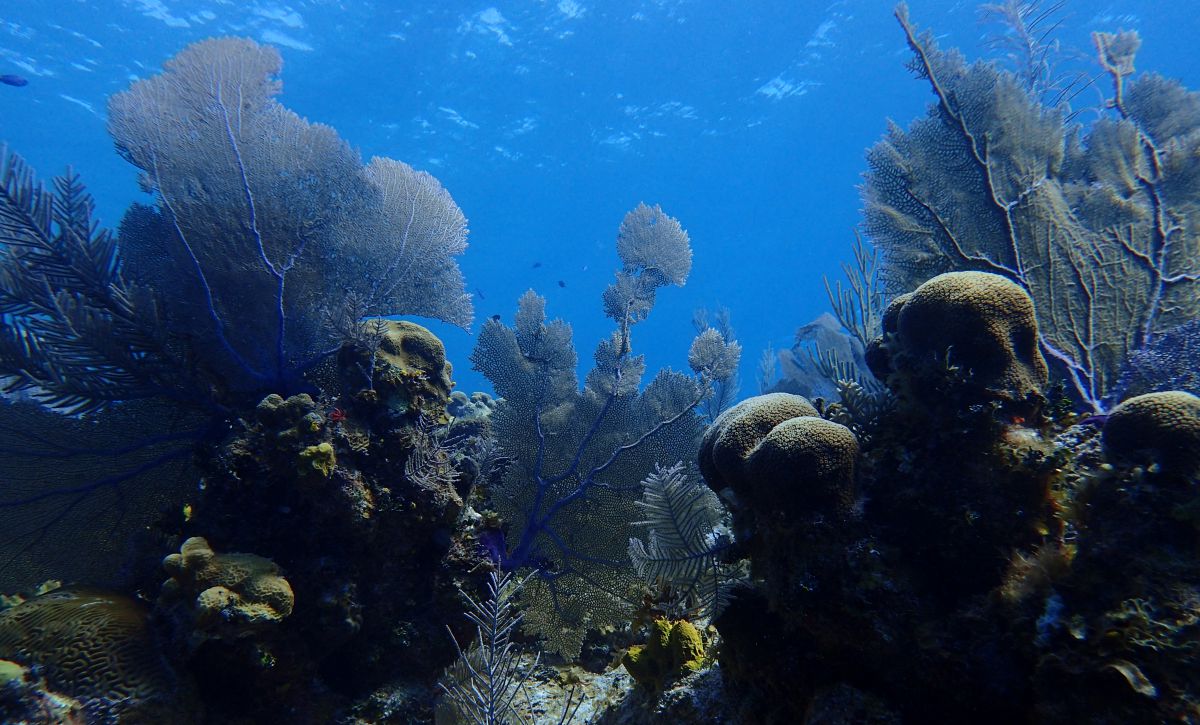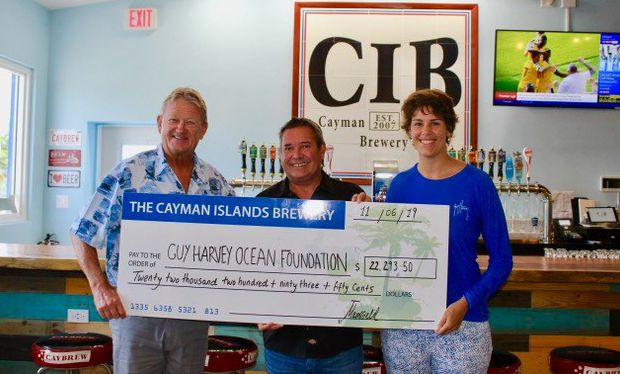
(L-R) Leslie Leaney, ISDHF executive director, and Rosa Harris, Cayman Islands director of tourism, at the announcement of the inductees for 2016
(CNS): The Cayman Islands Department of Tourism (DoT) has named the five newest inductees into the International Scuba Diving Hall of Fame (ISDHF), who will be honoured at a ceremony in Cayman 30 September 2016. They are Bob Barth, Dr Joe MacInnis, Ramón Bravo, Stuart Cove and Philippe Cousteau, Sr.
The ISDHF is also recognising Riichi Watanabe, Kanezo Ohgushi and Kyuhachi Kataoka as early pioneers for their technological contributions to sport diving.
The DoT announced the inductees last week at the annual Diving Equipment and Marketing Association trade show in Orlando, Florida.
Every year honourees are recognised for their contributions to the success and growth of recreational scuba diving through advancements in areas including dive travel, equipment design and innovation, and education. The DoT established the awards in 2000.
Below are details of the 2016 inductees:
Bob Barth (US)
Often regarded as the most famous living US Navy diver, Barth has been an integral part of several important Navy dive programmes. He is a pioneer in saturation diving, a unique dive that helps reduce the risk of decompression sickness while exploring great depths of the ocean. He also aided in the creation of the US Navy Decompression Tables associated with the US Navy’s Genesis and SEALAB projects, being the only diver to serve in every one of these habitat programmes. Barth trained NASA astronauts on sonar equipment used for detecting objects underwater. In recognition of his unique contributions to diving, the US Navy named their Panama City diver training facility the CWO Robert A. Barth Aquatic Training Facility.
Ramón Bravo (Mexico, honoured posthumously)
Recognised for his extensive contributions to the diving film and photography industry, and as a prominent Spanish-language diving author, Bravo is one of Mexico’s most famous divers. An early diving oceanographer and environmentalist, he maintained a successful television career promoting his environmental messages. Most notably, Bravo is recognised for his photography and study of “sleeping” tiger sharks off Isla Mujeres in the Caribbean, where he theorised that the sharks were not asleep, but in fact, cleansing their bodies with fresh water from the Yucatan river. Among his many projects, Bravo also photographed and directed the underwater scenes of the 1989 James Bond movie Licence To Kill.
Philippe Cousteau, Sr (France, honoured posthumously)
Esteemed scuba diver, photographer, filmmaker, author, pilot and son of famed adventurer Jacques Cousteau, Cousteau, Sr, is best known for his work on numerous diving documentaries which have aired worldwide. He also hosted his own environmental PBS series, Oasis in Space, in 1976. A dedicated world traveller, Cousteau Sr, made several contributions to the field of diving.
Stuart Cove (US)
Cove has been instrumental to the preservation of sharks and has made numerous appearances on the Discovery Channel’s Shark Week series, helping others to understand the importance of this apex predator. He founded Children on a Reef, an organisation that provides underprivileged children in The Bahamas a chance to experience the underwater world. Highly influential in Hollywood, California, Cove helped to create publicity and generate exposure for recreational diving among actors, teaching stars worldwide as well as members of Britain’s royal family to dive. He was on Hollywood’s “100 Most Influential People” list twice for his work in television and films, including For Your Eyes Only, Never Say Never Again, The World Is Not Enough, Flipper and Into the Blue.
Dr Joe MacInnis (Canada)
Renowned for his medical contributions towards the advancement of diving, MacInnis is recognised as one of the most distinguished divers in Canada. He began his diving career in 1954 and has since led 10 research expeditions alongside marine scientists. He served as the primary medical officer on many international diving projects ranging from diving under the Arctic ice with then Canadian Premier Pierre Trudeau to early saturation diving with Ed Link, Jon Lindberg and Robert Sténuit. MacInnis has also worked alongside director James Cameron on underwater film expeditions and has authored 10 books.
Early Pioneers: Riichi Watanabe, Kanezo Ohgushi and Kyuhachi Kataoka (Japan)
In the early 20th century, Watanabe, a pearl merchant in Japan, was seeking better equipment for divers. Determined to find a solution, he worked with Ohgushi to design a self-contained diving system in 1916, which was later patented in the US, England, France and other countries. Kataoka carried out their work and founded a company that manufactured Ogushi’s Peerless Respirator, which was used by several operators during the 1920s for salvage operations, including one in Russia.
For more information about the 2016 ISDHF inductees, visit the Department of Tourism website.




